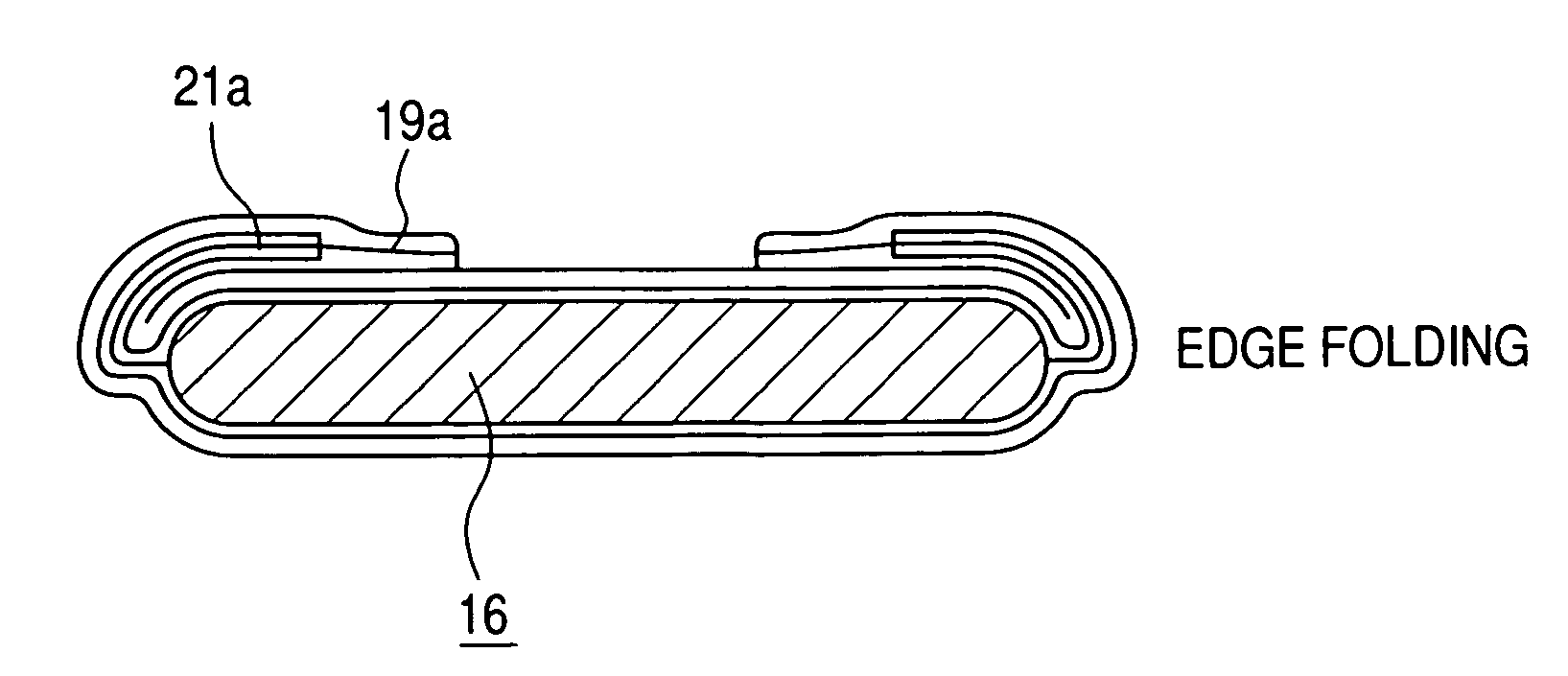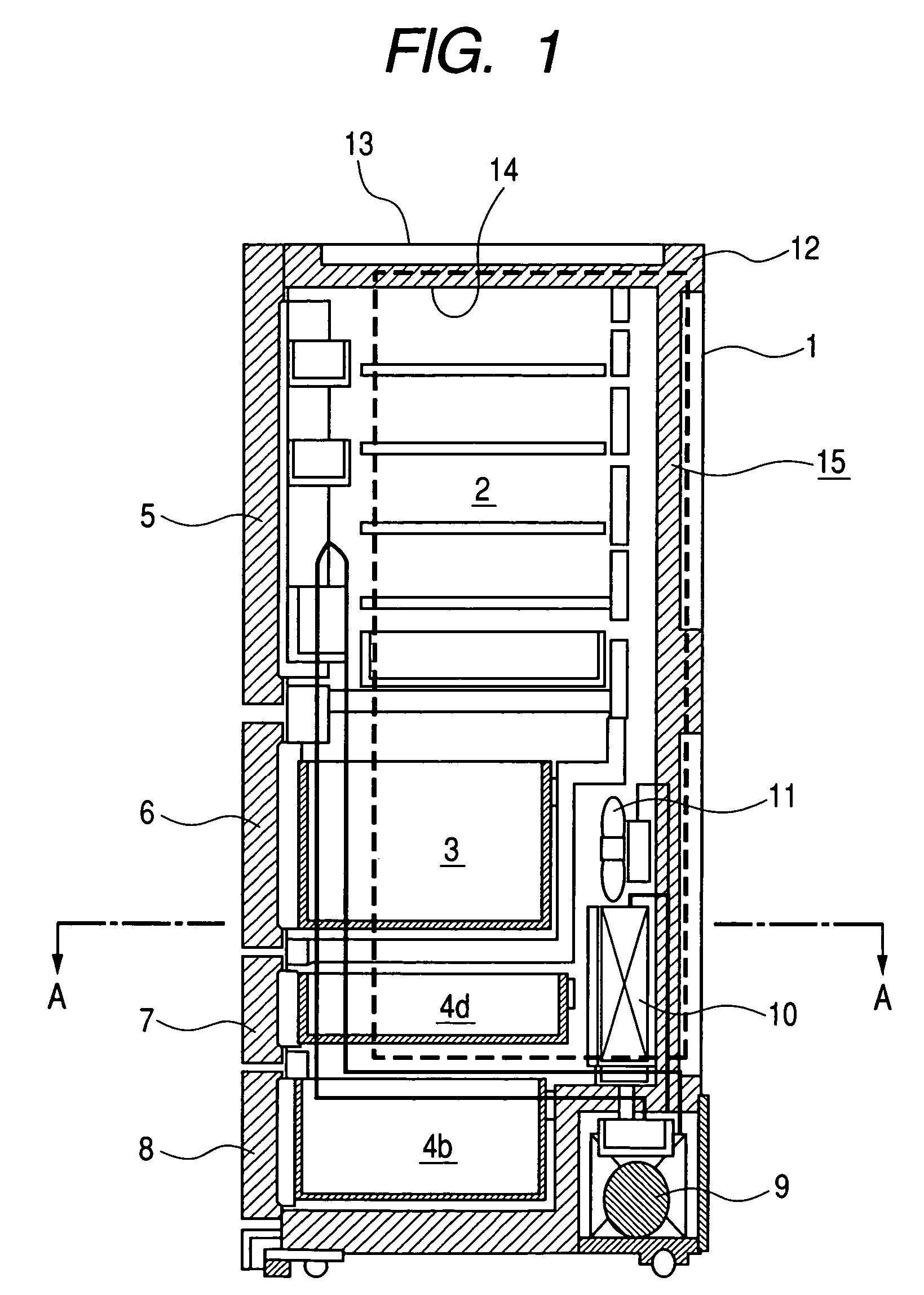Vacuum insulation panel and refrigerator incorporating the same
a technology of vacuum insulation panel and refrigerator, which is applied in the field of vacuum insulation panel, can solve the problems of inability to use cases, inability to cure the core of glass wool fiber using a binder, scratching or tear, etc., and achieves the effect of improving reliability, superior heat insulation, and improving reliability of the refrigerator
- Summary
- Abstract
- Description
- Claims
- Application Information
AI Technical Summary
Benefits of technology
Problems solved by technology
Method used
Image
Examples
Embodiment Construction
[0056]An embodiment of the present invention will be described in the following with reference to FIGS. 1 to 12B.
[0057]FIG. 1 is a vertical sectional view of a refrigerator to which the present invention is applied. FIG. 2 is an enlarged view of a principal part taken along line A-A of FIG. 1. FIGS. 3A TO 3C show diagrams for explaining a vacuum insulation panel according to the present embodiment. FIG. 3A shows the vacuum insulation panel according to the present embodiment. Parts (b) and (c) show conventional vacuum insulation panels in general use. FIGS. 4A and 4B show diagrams for explaining a vacuum insulation panel production process according to the present embodiment. FIG. 4A describes a vacuum insulation panel production process according to the present embodiment. FIG. 4B describes a general vacuum insulation production process. FIGS. 5A to 5C show diagrams for explaining a process for producing a core for the vacuum insulation panel according to the present embodiment. FI...
PUM
 Login to View More
Login to View More Abstract
Description
Claims
Application Information
 Login to View More
Login to View More - R&D
- Intellectual Property
- Life Sciences
- Materials
- Tech Scout
- Unparalleled Data Quality
- Higher Quality Content
- 60% Fewer Hallucinations
Browse by: Latest US Patents, China's latest patents, Technical Efficacy Thesaurus, Application Domain, Technology Topic, Popular Technical Reports.
© 2025 PatSnap. All rights reserved.Legal|Privacy policy|Modern Slavery Act Transparency Statement|Sitemap|About US| Contact US: help@patsnap.com



